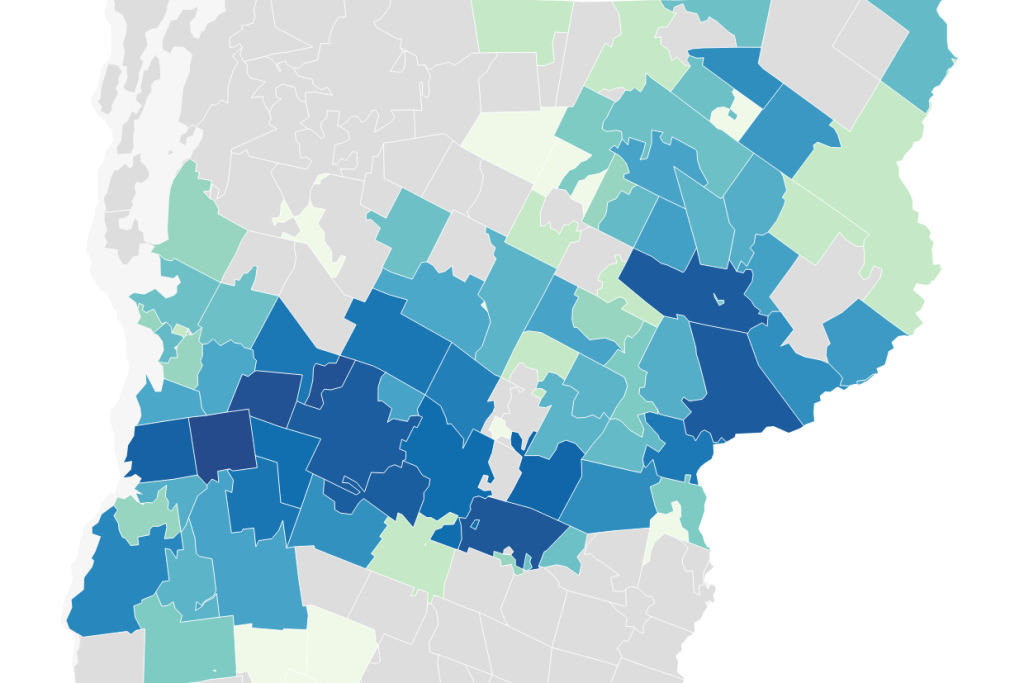The Federal Emergency Management Agency has already given out $6 million to Vermont individuals and households affected by flooding in early July, with less than a month to go before the application for FEMA aid closes for damage related to that storm.
From July 10 to 11, Vermont communities received 3 to 7 inches of rain, flooding homes and damaging local infrastructure. The flooding happened to fall almost exactly one year after another flood in July 2023 that walloped many of the same areas.
President Joe Biden approved a federal disaster for the July 10 event in August, allowing Vermonters to apply for the Individual and Households Program, which provides rental assistance, repair assistance and other immediate needs after a federally declared disaster. On Friday, Biden also approved a separate disaster declaration for the July 29 to 31 flood in the Northeast Kingdom, but it’s too soon to say how many people affected by that flood may apply for FEMA aid.
The agency has received nearly 1,600 applications for the July 10 and 11 flooding. It has approved 1,150 of those applications so far, according to the FEMA website.
Washington County, hard-hit by flooding in 2023, once again led the state in household aid requests this year, according to FEMA data. Of the seven counties where Vermonters are eligible for individual aid, it had both the most applications for aid and the most distributed. But Caledonia County narrowly led the state in terms of applications and amount distributed per capita.
Households living in the municipalities Plainfield, Hinesburg, Huntington and Lyndonville were among those with the most aid distributed, but it’s difficult to definitively rank communities because FEMA does not standardize the way it reports town names. The ZIP code 05667, which includes Plainfield and some surrounding communities, had the highest amount of aid distributed so far.
By comparison, about a month after FEMA declared a federal disaster in the 2023 flood, the agency had received about 4,700 applications for assistance and distributed $12.7 million in aid.
That would suggest that fewer Vermonters were in need of federal aid this year, but there are some important caveats. The federal government declared a disaster only days after the 2023 flood in July, while it took until Aug. 20 for FEMA to declare a disaster for the July 2024 flooding. Nine counties were eligible for aid in 2023, while only seven are eligible in 2024.
Both datasets exclude other significant flooding events that occurred later in the summer. In 2023, Addison and Rutland counties were hit with flooding in early August but were never made eligible for individual assistance.
FEMA has also changed some of its rules about how it distributes aid to streamline the application process over the past year.
Applying for FEMA aid
The deadline to apply for the Individual and Households Program is Oct. 21. FEMA extended the application deadline for the 2023 flood multiple times last year but has not announced any extensions for this year.
The FEMA webpage for the 2024 disaster has details on how to apply. At this point, only Vermonters who experienced damage between July 9 and 11 are eligible for individual assistance. The assistance also only applies to seven counties: Addison, Caledonia, Chittenden, Essex, Lamoille, Orleans and Washington.
FEMA allows disaster survivors to apply for aid through several methods: online through a federal website, by phone at 800-621-3362, through FEMA’s mobile app or in person at a disaster recovery center.
The agency announced on Wednesday that it would close its disaster recovery center at the Barre Auditorium on Saturday, Sept. 28. It is scheduled to remain open on Thursday, Friday and Saturday from 9 a.m. to 6 p.m. until it closes.
There are also disaster recovery centers at the Lyndon Public Safety Facility, the Waterbury Armory, the Hinesburg Town Hall and the Brighton Town Hall Gym. The addresses, hours and updated closure dates of each center are available on FEMA’s website.
Only U.S. citizens and qualified non-citizens are eligible for FEMA assistance. FEMA asks applicants to provide documents to prove their identity, along with proof of ownership and documentation of the damage to their property.
If you have flood insurance, you must apply for insurance funds before applying to FEMA. The agency may cover unmet needs after you receive insurance money.
FEMA may conduct a home inspection to assess the damage to your property before you can receive assistance. In a press release in August, FEMA warned Vermonters to be wary of home inspections scams. Official inspectors should be able to provide their credentials and should not have to ask for the homeowners’ nine-digit registration number when they arrive.
If FEMA rejects your application, you are entitled to appeal within 60 days of the rejection. Vermont Legal Aid offers tips on its website for appealing a FEMA decision, along with a hotline to call for legal help with an appeal. You can also make an appeal to request a higher award on top of what FEMA has provided.
Along with money for temporary housing and home repairs, FEMA provides funds for certain other needs, like essential household items, food and baby formula, vehicles, disaster-related child care expenses, disaster-related medical expenses and moving expenses.
FEMA has recently changed how its program works with the U.S. Small Business Administration. Before March, some applicants were told they would have to apply for an SBA disaster loan, and be denied, before becoming eligible for FEMA aid. Now, FEMA allows applicants to apply for an SBA loan at the same time as the FEMA application without affecting your eligibility for FEMA assistance.
Assistance to local governments and nonprofits go through a different system than individual assistance. Small business loans also go through a separate SBA system.
Read the story on VTDigger here: FEMA has given out $6 million in household aid in Vermont for July flooding as Oct. 21 deadline nears. Here’s how to apply..

